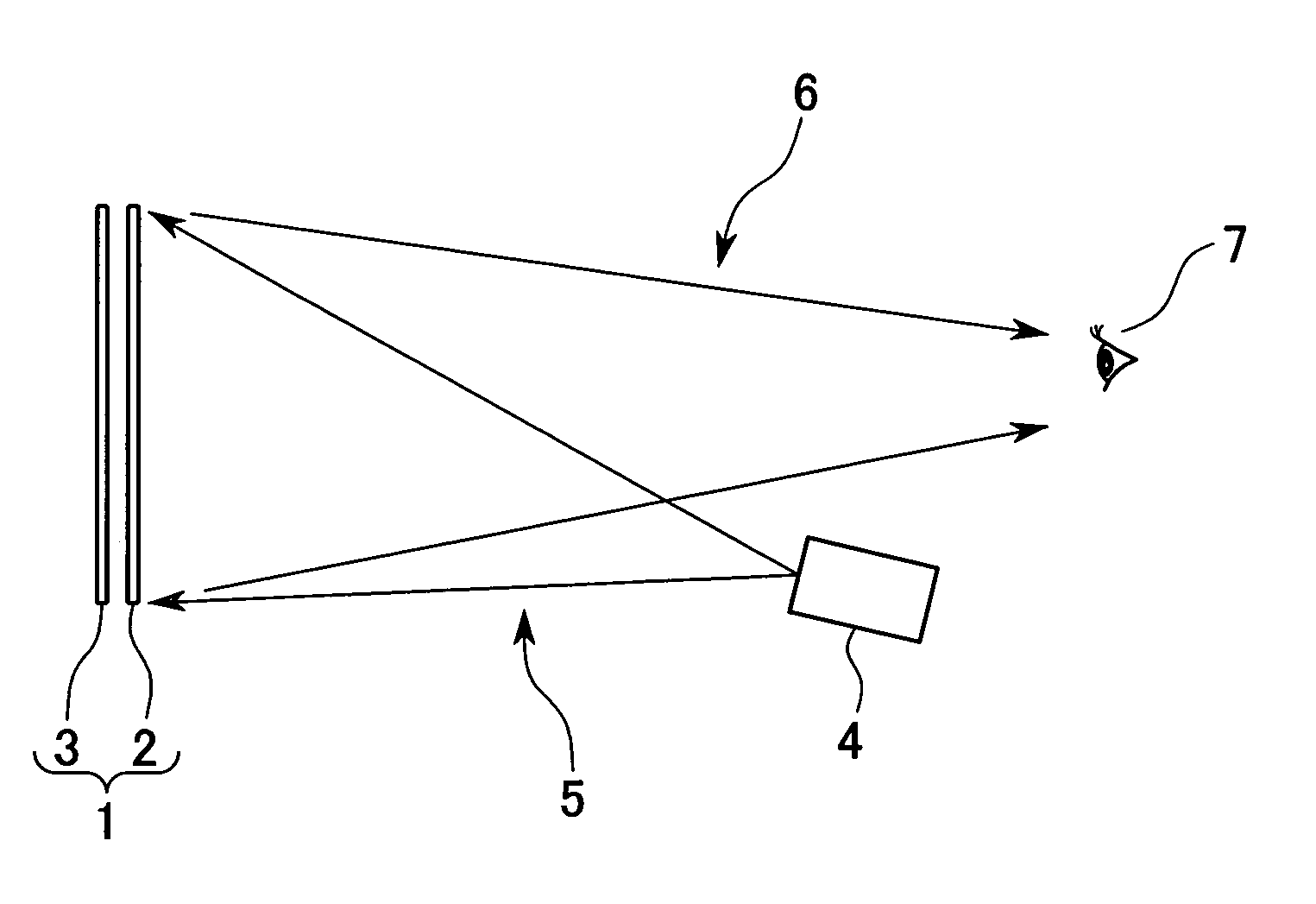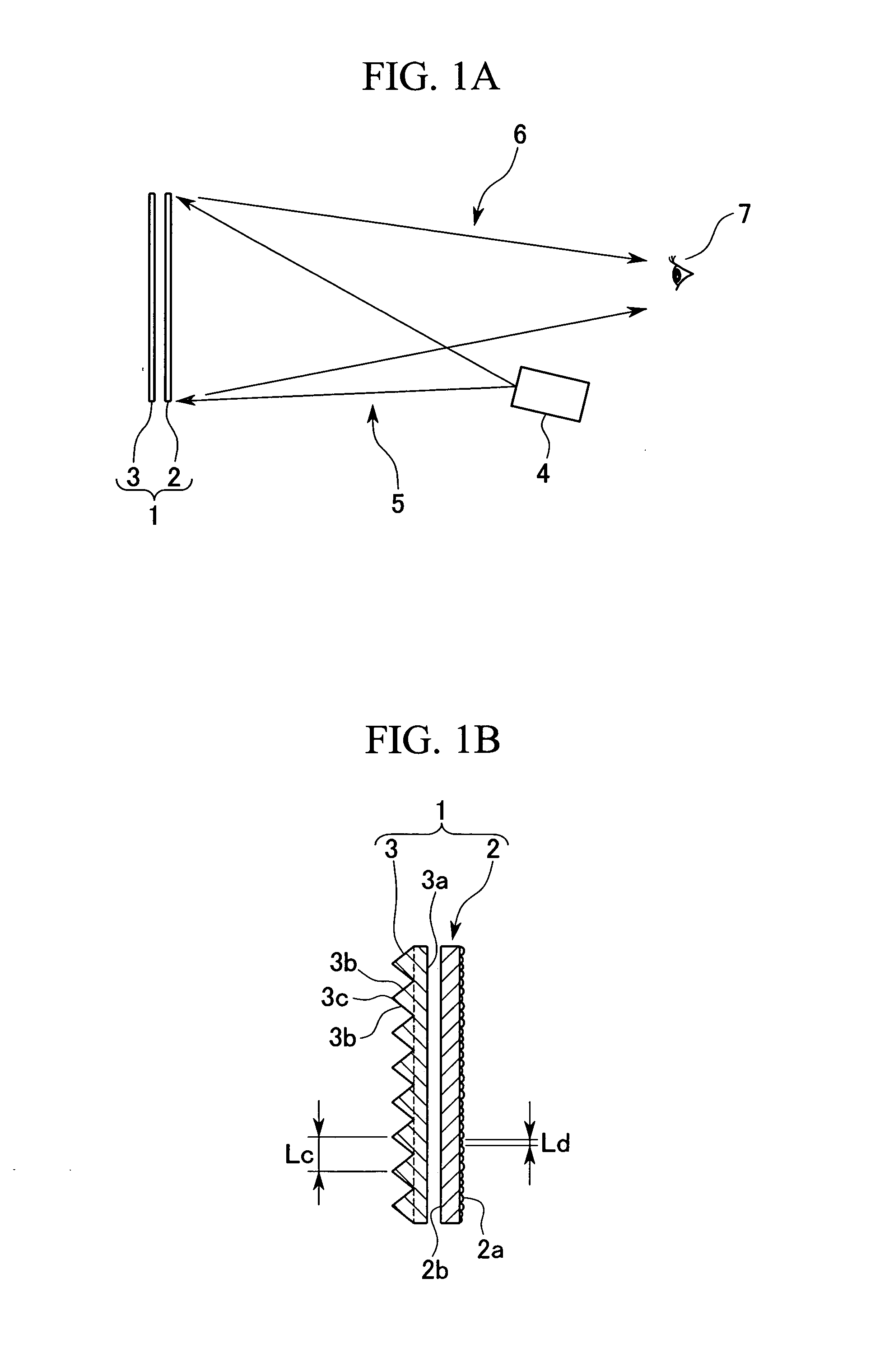Reflection type projecting screen, front projector system, and multi-vision projector system
a projector system and projector technology, applied in the field of projectors, can solve the problems of high power, poor contrast of projection light image, and high cost of screen production, and achieve the effect of effective use of screens
- Summary
- Abstract
- Description
- Claims
- Application Information
AI Technical Summary
Benefits of technology
Problems solved by technology
Method used
Image
Examples
second embodiment
[0226] A description will be made as regards a front projector system according to a second embodiment of the present invention.
[0227]FIG. 9A shows a schematic plane view for describing an outline structure of a front projector system according to the second embodiment of the present invention. FIG. 9B shows a schematic view of a-a section (b-b section, c-c section) in FIG. 9A. FIG. 10 shows a schematic front view for describing a structure of a reflection screen used in the front projector system according to the second embodiment of the present invention.
[0228] A projector system (front projector system) 100 according to the present embodiment projects a plurality of images on the reflection screen and is capable of projecting only one of the images on respective viewing regions which are independent of one another.
[0229] As shown in FIG. 9A, the front projector system 100 comprises projectors 4A, 4B, and 4C and the plate shaped reflection screen 1 which is supported by a scree...
third embodiment
[0269] A description will proceed of a front projector system according to a third embodiment of the present invention.
[0270]FIG. 12 shows a schematic plane view for describing an outline structure of the front projector system according to the third embodiment of the present invention. A projector system (front projector system) 101 according to the third embodiment comprises a reflection screen 102 instead of the reflection screen 1 used in the projector system 100 described in the second embodiment. The projector system 101 comprises the projectors 4A and 4C which are similar in structure to the second embodiment. In the example being illustrated, the projector 4A projects the projection light 5A in the range in which the projection light 5A is overlapped with the projection light 5C, with the incident angle θ. The projector 4C projects the projection light 5C in a direction having output angle θ in which the projection light 5A is outputted. A description will be mainly made as...
fourth embodiment
[0304] A description will proceed to a multi-vision projector system according to a fourth embodiment of the present invention.
[0305]FIG. 13A shows a schematic plane view for describing an outline structure of a multi-vision projector system according to the fourth embodiment of the present invention. FIG. 13B shows a schematic view of a-a section (b-b section, c-c section) of FIG. 13A. Incidentally, it is possible to use the reflection screen illustrated in any one of FIG. 1 and FIG. 10 as a reflection screen used in the multi-vision projector system according to the fourth embodiment of the present invention.
[0306] In the projector system (multi-vision projector system) 100 according to the present embodiment, a plurality of images are projected on the reflection screen and the images are capable of being viewed on a plurality of viewing regions which are independent of one another.
[0307] As shown in FIG. 13A, the projector system 100 comprises projectors 4A, 4B, and 4C, a flat...
PUM
 Login to View More
Login to View More Abstract
Description
Claims
Application Information
 Login to View More
Login to View More - R&D
- Intellectual Property
- Life Sciences
- Materials
- Tech Scout
- Unparalleled Data Quality
- Higher Quality Content
- 60% Fewer Hallucinations
Browse by: Latest US Patents, China's latest patents, Technical Efficacy Thesaurus, Application Domain, Technology Topic, Popular Technical Reports.
© 2025 PatSnap. All rights reserved.Legal|Privacy policy|Modern Slavery Act Transparency Statement|Sitemap|About US| Contact US: help@patsnap.com



